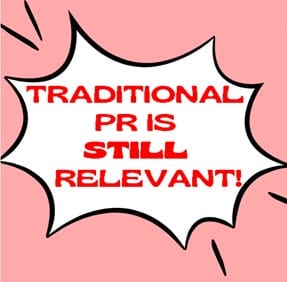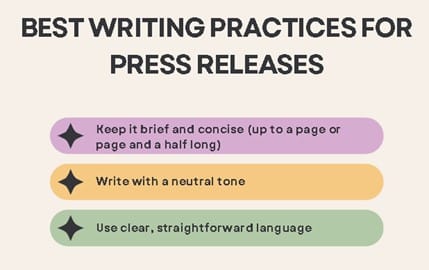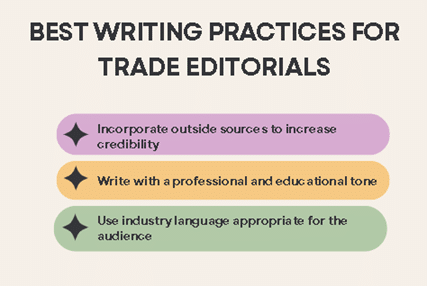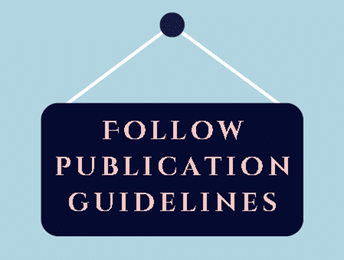Making content is one thing but getting it in front of the right people is entirely another.
Think about it: Between the extensive amount of content that’s published every day, all the different types and focal points of content, and so many possible audiences… well, approaching public relations (PR) activities like press releases and trade editorials for your content can feel intimidating.
Look, we get it; we can relate (you might even say we publically relate. Wink). That’s why we’re here to go over the traditional types of PR as well as help you understand the basics of how to do and approach PR for content.
Traditional PR
As you can probably guess, PR approaches and practices have considerably evolved over the years to better suit our increasingly online lifestyles.
Back in the day (as the kids say), traditional PR involved managing an entity’s reputation and public communications by networking and using offline methods like TV and radio. Think of using channels like newspapers and magazines to publish press releases and trade editorials.
But today, PR activities at content marketing firms have a broader reach and utilize digital tools and strategies.
While it still involves managing relationships between entities and their audiences, it also emphasizes communicating with audiences. That is to say, PR isn’t just about networking and disseminating an important update about a company, but it’s also about just sharing stories with the public. You know, using channels like blogs, vlogs, and social media to share your content.
So does that mean traditional PR activities are fossilizing next to some forgotten floppy discs?
Of course not! We’re here to assure you that traditional PR efforts like press releases and trade editorials are still relevant.
Did you catch that? Did you write it down? Okay, one more time, louder for the back:

Press Releases
A press release is a traditional PR tactic that’s still heavily used in effective content marketing strategies today. It’s a published document that announces specific information from an organization. For example, a press release might share:
- News that a software company is deploying a new app
- A product launch or book release
- New hires and/or management of a well-known company
- Community-wide events
Crafting an Effective Press Release
In general, traditional press releases have a similar look and feel to the average newspaper article. Before you start drafting your press release, we suggest taking the following steps:
1. Meet with the client
- Discuss their goals and what they’re hoping to achieve with the press release
- Identify the target audience
2. Acquire the information needed for the content
- Conduct interviews (if applicable)
- If the client wants the press release to include a photo, either get said photo from the client or take photo(s) and get them approved
Once you’re ready to start writing, you can use the following best practices to help you create a high-quality press release:

Of course, there are no hard and fast rules for writing a press release—it all circles back to what the client wants. For instance, some clients may want the content to be longer or to incorporate more biased, promotional language.
Distributing Press Releases
So you’ve written your press release, but how do you know who to send it to for publication? You typically have two options:
Find opportunities on your own
A large component of PR requires you to make ongoing networking efforts—making connections and building relationships with newspapers, journalists, news anchors, social media influencers, publication editors, and so on.
Since press releases can cover all sorts of information for all sorts of audiences, it won’t take long to start building up your PR network.
This will come in handy when it’s your responsibility to distribute a new press release.

Use client-curated opportunities
You’ll find that in some cases, clients may already have established connections with various distribution outlets. Although they might want you to work from their list of distribution opportunities, we encourage you to share any additional suggestions you might have.
As you make a list of distribution opportunities for your press release, it’s important to exercise constraint. As writer Flori Meeks advises, “Send fewer press releases to people who can actually do something with it.” In other words, don’t send your press release to everyone in your contacts! Only send it to your connections who you believe will truly find it relevant and of interest.
Trade Editorials
Trade editorials are another tactic of traditional PR that persists in marketing practices today. In short, the term refers to informational articles written by and for professionals. To elaborate, trade editorials are articles written by subject matter experts (SMEs) centered around topics within a specific industry or professional expertise.
Crafting an Effective Trade Editorial
Unlike press releases, trade editorials look and feel more like a longer article—like a white paper, long-form blog, or something that you might see in a magazine.
Before you start drafting your article, we suggest taking the following steps:
1. Meet with the client (if applicable)
- Discuss the topic and desired outcomes of the editorial
- Discuss the general structure and format of the piece
- Identify the target audience
2. Acquire the information needed for the content
- Perform research
- Conduct interviews with SMEs (if applicable)
Once you’re ready to start writing, keep in mind the following best practices to help you create a high-quality trade editorial:

Distributing Trade Editorials
Publishing editorials actually isn’t that different than publishing press releases! That being said, there is one important part you need to both pay close attention to and adhere to:

And remember, only send your trade editorial to publishing entities that you believe your content is truly of interest and relevant to.
PR Allstars
Whether you need help with PR for B2B content marketing or just want some guidance from a professional content marketing company, our team at The Writers For Hire is here and ready to help.



